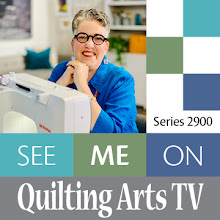I've been eager to try rust dyeing for a while now, and yesterday I came across
Bonnie McCaffery's interview with one of the rust dyeing gurus,
Lois Jarvis. This made me even more interested in testing it out.
I had been collecting some metal objects for a while. Some I found around my neighborhood when I was walking the dog. The crushed old bottlecaps were retrieved from the gravel parking lot at Charlotte's Verizon Ampitheater.
I wet the fabric first, placed the metal objects on top, sprinkled them with table salt, folded the fabric over them, and spritzed it with more water. From what I've read, vinegar can make the oxidation process happen faster than salt. I'm going to try it next.
Rust is iron oxide. The iron reacts to the oxygen in the water and the air and creates rust. Rust is a mordant, and remains in the fiber permananently.
Here's what it looked like after about 12 hours:

One of the biggest surprises is that some of the metal objects that were rust-free when I started (like the bigger square with the circle in it) produced the strongest rusty marks. This made me want to run to the hardware store and buy some other metal pieces to try. Maybe tomorrow...
And here's what it looked like after about 24 hours, before rinsing and washing:

Notice the blue-grey marks in the photo above? I think they were made by twigs from my maple tree! (Keep reading and you'll find out why they made a different color.)
Here it is after washing in Synthrapol, drying and pressing. This shot shows the entire sheet of fabric, about a fat quarter, and how the objects left different marks on the fabric below them (right side) and above them (left side). It is interesting that the marks are more solid on the fabric above. This may be because the fabric was dyed on my sidewalk, and the gritty texture pushed the fabric close to the metal in some places and not in others.

A shot closer up:

And even closer:

I also put a small scrap of white cotton into an old rusty pail with some salt. This time I also added some strong tea. Tea is a tannin, and it combines with iron to make a more color-fast dye. It has the added effect of making the color shades of gray.

Here is the fabric I dyed in the bucket, after washing and drying:

Want to know more? Kimberly Baxter Packwood of
The Prairie Fibers Co. has great information on her website. And
Paula Burch does a good job of explaining the chemical process behind rust dyeing.

































































